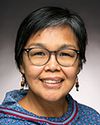Madam Chair, that's quite correct.
If you look at our information products, you see that they're stable. Unless there are changes to the legislation, we typically do not revisit them, or we may because we want to improve them, but most of the documents themselves remain stable and therefore are reused over time. Translation is not an issue.
The timelines, of course, vary. Most service standards are between 10 and 20 days, and sometimes more than 15 days, but that's for fairly long documents. As suggested by the member, that does not apply to the name on the ballot. Even the party name, if we can work in advance with parties and get agreement on the translation and transliteration, we can have that resolved.
Candidates names, though, are a bit of a different matter. It's a small document, I agree, but the time frames that we're talking about are not days but hours. In Nunavut, for example, on the close of nominations, 21 days before election day, in order to have ballots at the advance polls on day 10, the image of the ballot has to be finalized on the night of day 21. There are not an extra 24 hours in the schedule for that, so we need somehow to find the time to do the translation there and squeeze it in.
Inuktitut is fairly accessible in terms of translation. It's not equally true of other languages, and there is no time there for validation. If a candidate who does not speak the language does not have the opportunity to verify, we have to find out how that works in the process and how long we extend the time frames to allow this, because right now there is just no space in those 10 days for that.
I'm not saying it shouldn't be done and it's not possible. I think we have to learn through the experiment of facsimile, running the risk in a facsimile that it may not be available on the first day of advance polls—we'll see what happens there—and build the expertise to then come back and see whether it is appropriate, useful and feasible to include that on the ballot itself. I think we need to work through the experience.





